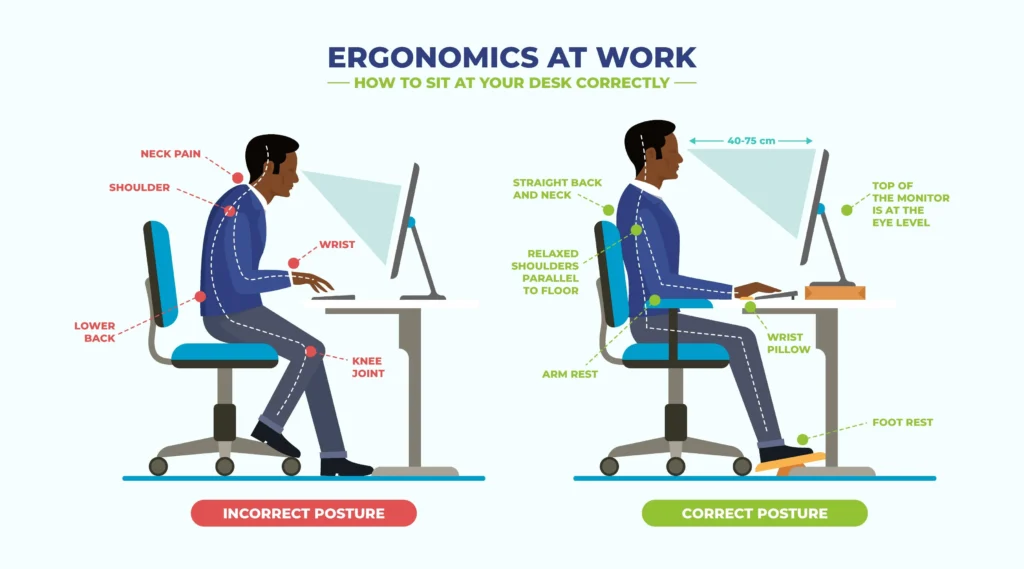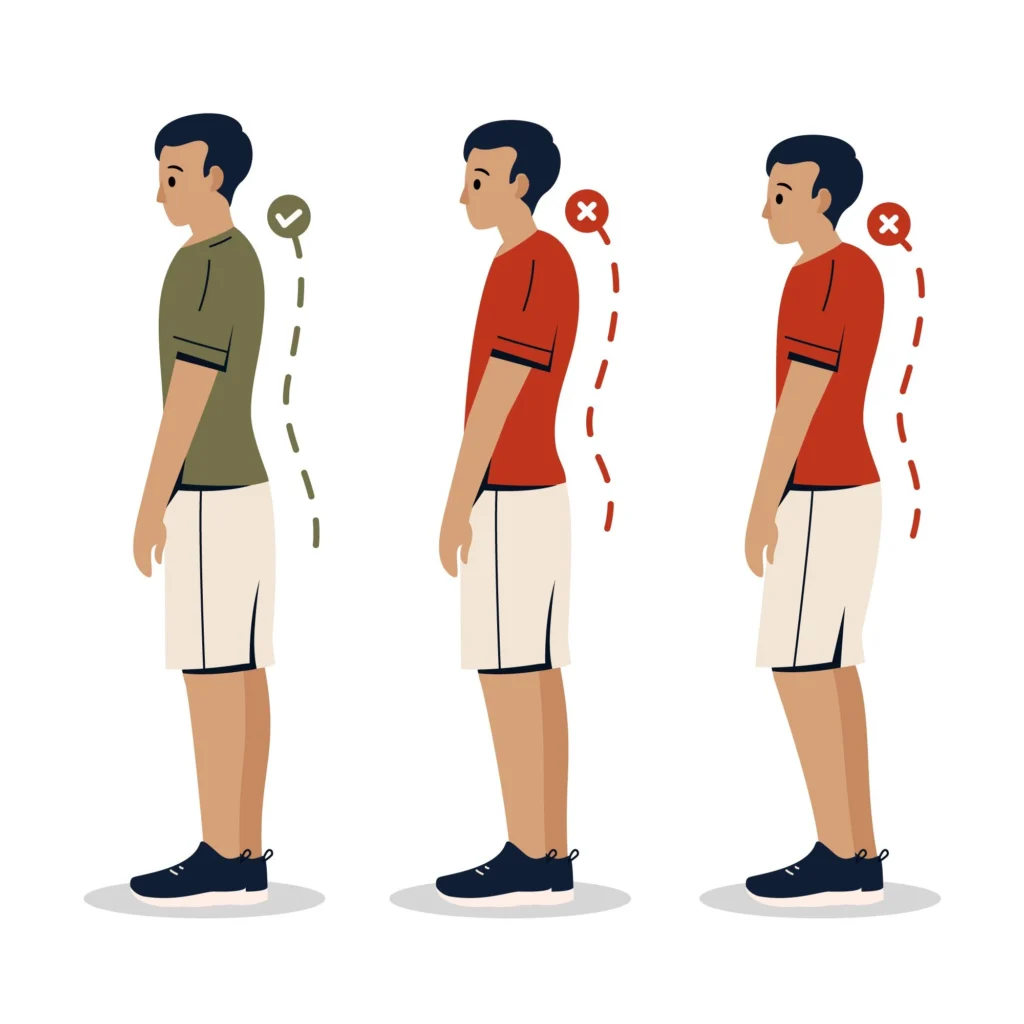Visit Our Location
64 Park Rd N, Oshawa, ON L1J 4L1, Canada
Ergonomic training is a crucial practice in ensuring that individuals work in an environment that promotes comfort, reduces the risk of injury, and enhances productivity. By making small adjustments to the way you sit, stand, and move in your workspace, you can significantly improve your health and overall performance. Whether you work in an office, manufacturing, or healthcare setting, ergonomic principles can be applied to any work environment to prevent strain, stress, and long-term injuries.
Ergonomic training focuses on teaching individuals how to arrange their workspaces, equipment, and body mechanics to maximize comfort, safety, and efficiency. The goal is to minimize the risk of musculoskeletal disorders (MSDs) and promote healthier, more sustainable work habits. This training often includes education on posture, workstation setup, equipment usage, and movement patterns, all of which contribute to reducing physical strain during work-related tasks.

For those in the Oshawa area, ergonomic training in Oshawa can provide valuable insights into optimizing your workspace and improving your overall health. In addition to improving physical health, ergonomic training can enhance overall work performance by reducing fatigue and discomfort, leading to better focus and productivity throughout the day.
Ergonomic training is beneficial for addressing a variety of conditions that arise due to poor posture, repetitive movements, or improper workspace design. In fact, ergonomic training in Oshawa can help individuals in this area by offering specialized guidance to improve comfort and efficiency in their work environment. Some of the most common conditions that can be improved with ergonomic adjustments include:
Poor posture and improper workstation setup can strain the spine and surrounding muscles, leading to chronic back and neck pain. Ergonomic training teaches proper sitting, standing, and movement techniques to relieve this tension and improve posture, thus preventing further discomfort.
Carpal Tunnel Syndrome (CTS) is a repetitive stress injury that affects the wrists and hands, often caused by long hours of typing or using a mouse. One effective way to reduce the risk of developing CTS is through ergonomic training in Oshawa, which helps individuals adjust their typing positions, keyboard height, and hand movements. By implementing these ergonomic principles, people can significantly lower their chances of suffering from CTS while improving overall comfort and productivity.
Shoulder pain is commonly caused by improper sitting posture or repetitive overhead movements. Ergonomic training helps workers set up their workstations in a way that supports shoulder alignment and minimizes strain on the muscles and joints.
Long hours of screen time can lead to eye strain, dry eyes, and headaches. Ergonomic training emphasizes the importance of screen height, lighting, and proper distance to reduce these symptoms. Adjustments in how often you take breaks and blink consciously can also be part of the training to ease eye strain.
Repetitive Strain Injuries (RSIs) occur when repetitive tasks are performed over time without proper breaks or movement variations. Ergonomic training teaches workers how to alternate tasks, take proper breaks, and use supportive equipment to reduce the risk of RSIs in the wrists, hands, and other parts of the body.
Standing for long periods without proper support or movement can lead to leg and foot pain. Ergonomic training helps individuals adjust their stance, use anti-fatigue mats, and shift weight regularly to prevent discomfort and enhance circulation.
Ergonomic training covers several important components to ensure that workers are set up for success in their work environments. Some key elements include:
Proper posture is foundational to ergonomic health. Training emphasizes the importance of sitting with a neutral spine, keeping shoulders relaxed, and aligning the head, neck, and back to reduce strain. Whether sitting or standing, correct posture can prevent long-term discomfort and pain.

Your workstation plays a significant role in reducing or causing physical strain. Ergonomic training teaches how to adjust desks, chairs, and screens to match an individual’s body size and work habits. For example, chairs should provide adequate lumbar support, and screens should be positioned at eye level to minimize neck strain.
Ergonomics isn’t just about how you sit; it also involves how you use equipment. Training, such as ergonomic training in Oshawa, focuses on adjusting chair height, keyboard position, and mouse placement to ensure that wrists and hands are positioned comfortably to prevent strain and injury.
Repeated motions, such as typing, lifting, or moving items, can lead to injuries if not done correctly. Ergonomic training provides guidance on how to perform these tasks in a way that reduces strain on the muscles and joints, using proper body mechanics.
Regular breaks and stretches are essential to reduce fatigue and prevent injury. Ergonomic training, such as ergonomic training in Oshawa, often includes exercises and stretches that workers can do throughout the day to alleviate tension and promote circulation. By incorporating such training, employees can enhance their overall comfort and well-being while minimizing the risk of strain and discomfort.
Implementing ergonomic training in the workplace offers several benefits for both employees and employers. These benefits include:
The primary goal of ergonomic training is to reduce the risk of injury. By encouraging proper posture, workstation setup, and movement, individuals are less likely to develop musculoskeletal disorders (MSDs), carpal tunnel syndrome, and other physical injuries. For those in the area, seeking ergonomic training in Oshawa can provide valuable guidance tailored to the local workforce, helping to ensure a safer and more comfortable working environment.
When workers are comfortable and pain-free, they are better able to focus and work efficiently. Ergonomic training helps employees perform tasks with less discomfort and fatigue, resulting in improved productivity and fewer sick days.
Ergonomic training leads to healthier employees, which translates to fewer workplace injuries and reduced absenteeism. When employees feel comfortable in their work environments, they are more likely to experience increased job satisfaction and overall well-being.
By reducing workplace injuries and improving employee productivity, employers can save on medical costs, workers’ compensation claims, and lost productivity. Ergonomic training is an investment in the long-term health and success of the business.
Ergonomic training can be tailored to meet the needs of any workplace. Whether you’re looking to train a few individuals or an entire team, starting with an ergonomic assessment is key. This evaluation identifies potential risks and provides recommendations for improving workstation setup, posture, and movement techniques.
Contact us today to schedule an ergonomic consultation and improve the health, comfort, and productivity of your workforce.